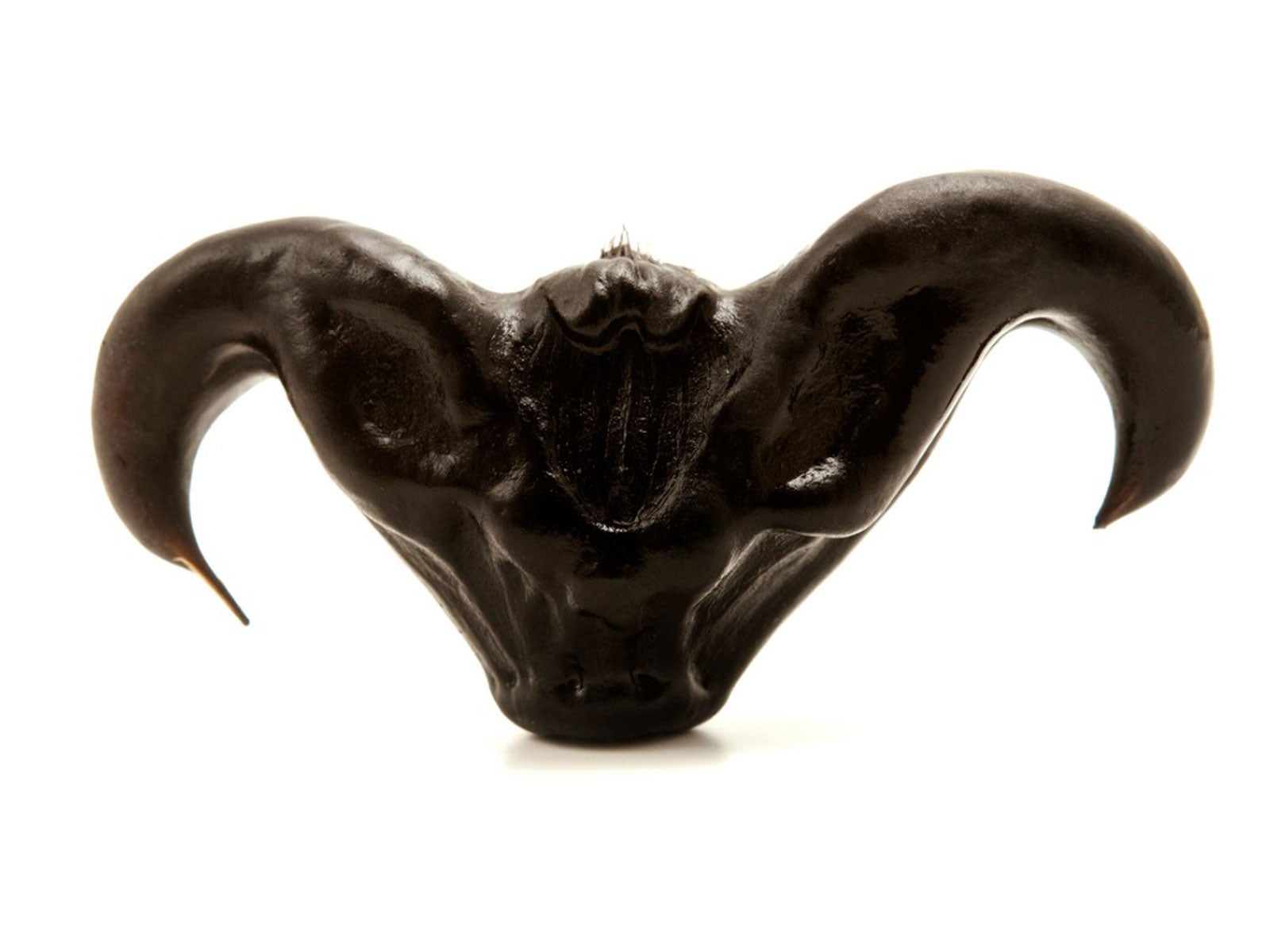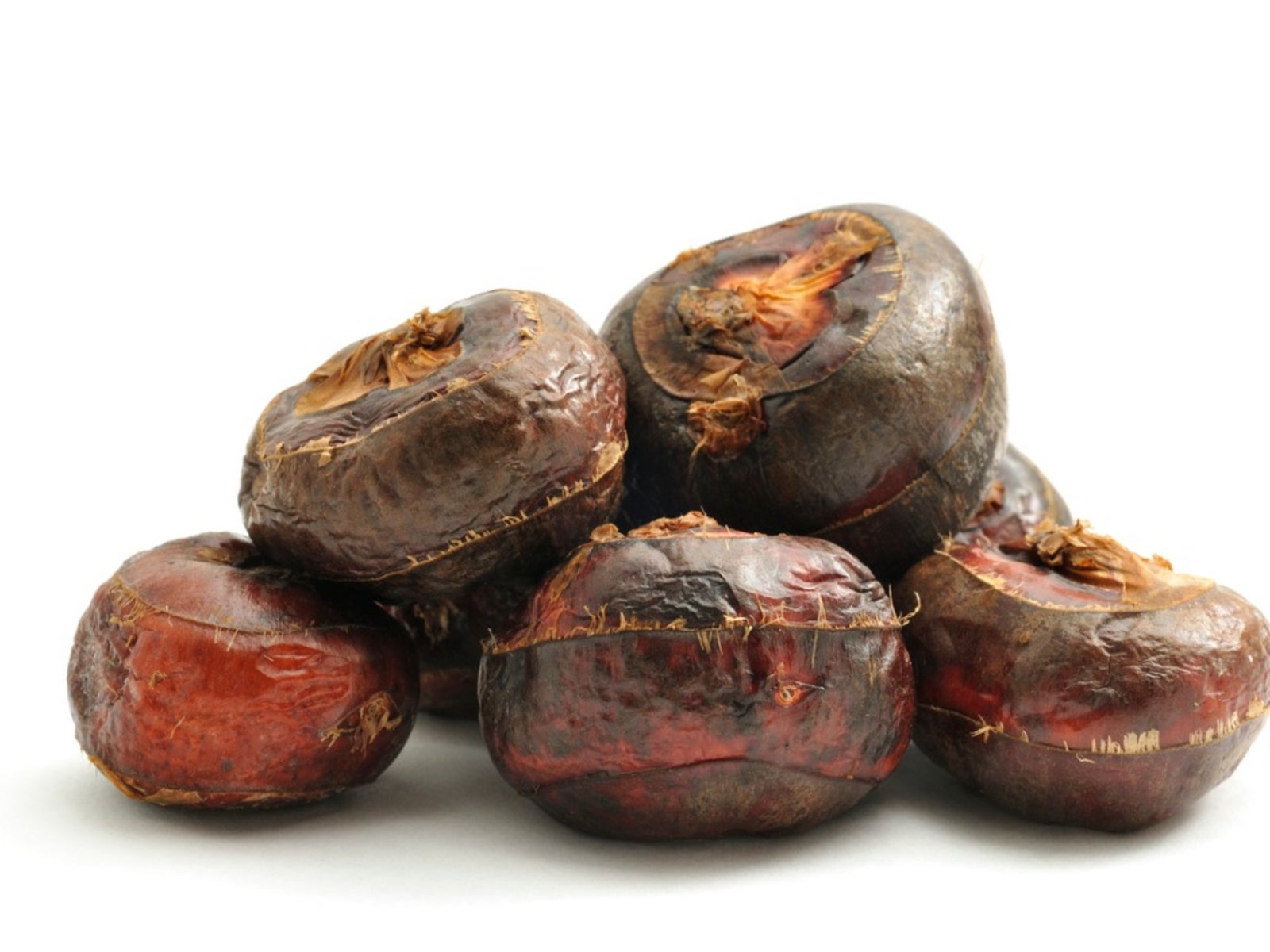Bat Nut Info: Learn About Water Caltrop Nuts


Water caltrop nuts are cultivated from eastern Asia to China for their unusual, edible seed pods. The Trapa bicornis fruit pods have two downward curving horns with a face that resembles a bull’s head, or to some, the pod looks like a flying bat. Common names include bat nut, devil’s pod, ling, and horn nut.
Trapa comes from calcitrappa, the Latin name of the caltrop, referring to the strange fruits. The caltrop was a medieval device with four prongs that was thrown on the ground to disable the enemy’s calvary horses during European warfare. The term is more relevant to the T. natans water caltrop nuts that have four horns, which incidentally, were introduced into the U.S. in the late 1800s as an ornamental and is now listed as invasive to the waterways in northeastern U.S.
What are Water Caltrops?
Water caltrops are aquatic plants that lodge in the soil of ponds and lakes and send up floating shoots topped with a rosette of leaves. A single flower is born along the leaf axils which produces the seed pods.
Water caltrops require a sunny situation in a still or softly flowing, slightly acidic water environment with rich soil to thrive. The leaves die back with a frost, but bat nut plant and other caltrops return from seed in the spring.
Water Caltrop vs. Water Chestnut
Sometimes referred to as water chestnuts, caltrop bat nuts are not in the same genus as the crunchy white vegetable root often served in Chinese cuisine (Eleocharis dulcis). The lack of distinction between them is often a source of confusion.
Bat Nut Info: Learn About Water Caltrop Nuts
The dark brown, hard pods contain a white, starchy nut. Similar to water chestnuts, the bat nuts have a crunchy texture with a mild flavor, often sauteed with rice and vegetables. Bat nut seeds should not be eaten raw, as they contain toxins but are neutralized when cooked.
Once roasted or boiled, the dried seed also can be ground into a flour to make bread. Some seed species are preserved in honey and sugar or candied. Propagation of water caltrop nuts is by seed, harvested in the fall. They must be stored in a small amount of water in a cool location till ready for spring sowing.
Gardening tips, videos, info and more delivered right to your inbox!
Sign up for the Gardening Know How newsletter today and receive a free copy of our e-book "How to Grow Delicious Tomatoes".

After graduating from Oklahoma State University with a degree in English, Susan pursued a career in communications. In addition, she wrote garden articles for magazines and authored a newspaper gardening column for many years. She contributed South-Central regional gardening columns for four years to Lowes.com. While living in Oklahoma, she served as a master gardener for 17 years.
-
 Moody Blooms For Spring: 8 Types Of Black Flowers To Add Drama To Spring Displays
Moody Blooms For Spring: 8 Types Of Black Flowers To Add Drama To Spring DisplaysFrom midnight burgundies to inky violets, several types of black flowers can enrich and embolden a spring display. Try these brooding bloomers for a moody garden
By Tonya Barnett
-
 Can Snake Plants Live Outside? Everything You Need To Know For Snake Plants Al Fresco
Can Snake Plants Live Outside? Everything You Need To Know For Snake Plants Al FrescoSnake plants can live outside given the right conditions, but be careful that they don't take over! Learn the best way to use snake plants in your landscape.
By Mary Ellen Ellis
